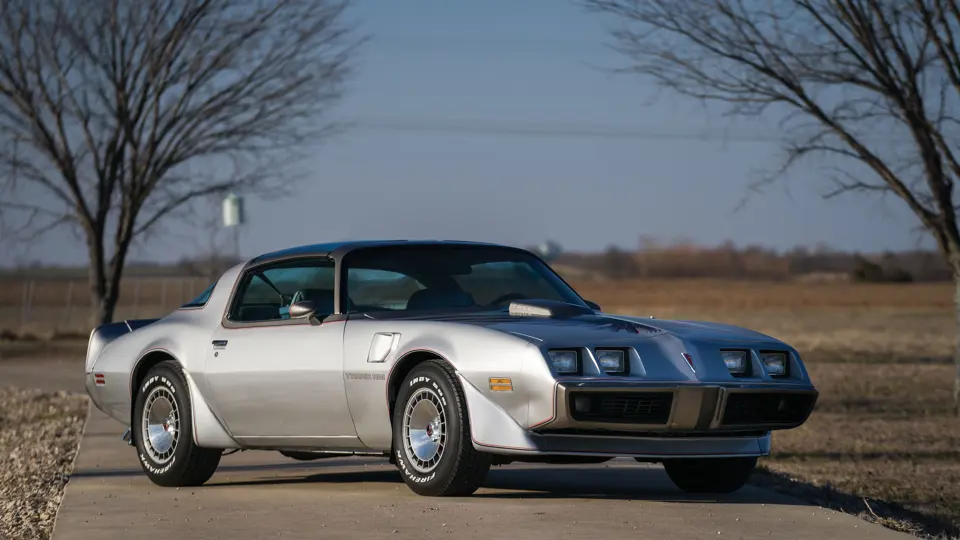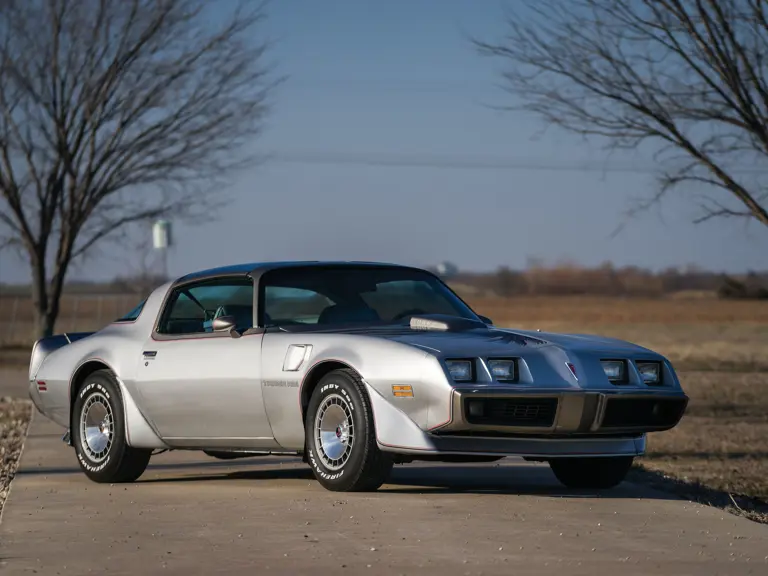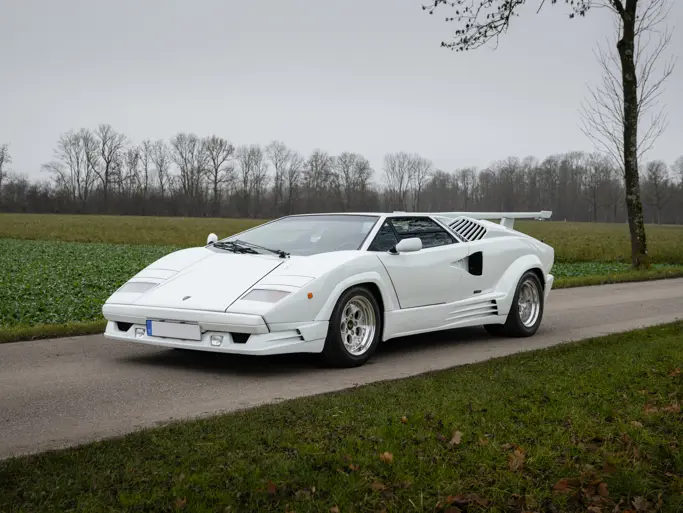
1979 Pontiac Firebird Trans Am
{{lr.item.text}}
$28,600 USD | Sold
{{bidding.lot.reserveStatusFormatted}}
- 400-cid Pontiac V-8 engine
- Four-speed manual transmission
- WS6 handling package
- Special paint, interior, wheels & badging
- Also was model for 1979 Daytona 500 pace car
- Air conditioning
- T-tops
- Many power conveniences
In 1979, Pontiac released the 10th Anniversary Pontiac Firebird Trans Am to commemorate the anniversary of the first Trans Am that rolled off the line in 1969. This was a limited production run of only 7,500 units. The only option available on the 10th Anniversary Trans Am was for the powertrain; your choices were either the Pontiac L78 400-cid with the four-speed transmission (like the unit in this car), or the borrowed from Oldsmobile L80 403-cid with the automatic transmission.
Standard on the 10th Anniversary was the two-tone silver and charcoal paint. This paint scheme was accented by a special five-color hood-bird whose wings extended over the hood and onto the fenders. The body of the car is also outlined in a special black and red stripe package, plus it has front and rear spoilers. There were also special decals that were placed on select cars signifying the 10th Anniversary Edition; this Firebird has been left unadorned by these graphics. All of the 10th Anniversary cars are nicely equipped with the WS6 handling package, custom silver interior with thicker nap carpet and the Firebird emblem embroidered in the door panels and the center rear seat-back.
Also standard were power windows, power door locks, air conditioning and power trunk release; just about all options of the time are on these cars. The interior is also trimmed with an engine-turned gearshift bezel that nicely complements the dashboard. The Firebird also has a factory radio with 8-track tape player. The T-tops are a special mirrored finish and this was the first appearance of the “Turbo” styled wheel design. The 10th Anniversary Trans Am also was the Pace Car for the 1979 Daytona 500. Nicely maintained, this will be a fun way to explore late 1970s American muscle’s transition into well-appointed specialty presentations.


 | Fort Lauderdale, Florida
| Fort Lauderdale, Florida


